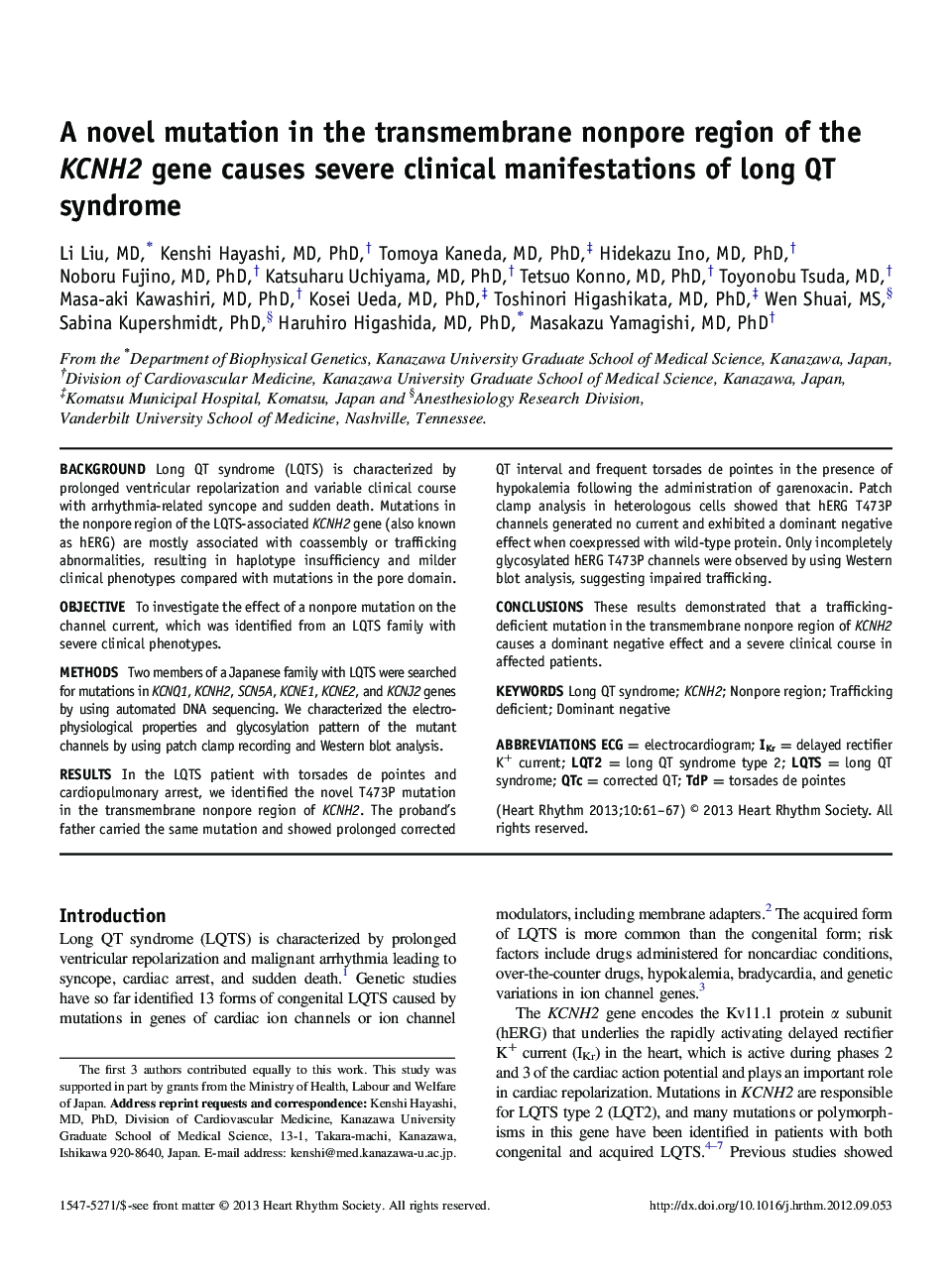| کد مقاله | کد نشریه | سال انتشار | مقاله انگلیسی | نسخه تمام متن |
|---|---|---|---|---|
| 2922685 | 1175852 | 2013 | 7 صفحه PDF | دانلود رایگان |

BackgroundLong QT syndrome (LQTS) is characterized by prolonged ventricular repolarization and variable clinical course with arrhythmia-related syncope and sudden death. Mutations in the nonpore region of the LQTS-associated KCNH2 gene (also known as hERG) are mostly associated with coassembly or trafficking abnormalities, resulting in haplotype insufficiency and milder clinical phenotypes compared with mutations in the pore domain.ObjectiveTo investigate the effect of a nonpore mutation on the channel current, which was identified from an LQTS family with severe clinical phenotypes.MethodsTwo members of a Japanese family with LQTS were searched for mutations in KCNQ1, KCNH2, SCN5A, KCNE1, KCNE2, and KCNJ2 genes by using automated DNA sequencing. We characterized the electrophysiological properties and glycosylation pattern of the mutant channels by using patch clamp recording and Western blot analysis.ResultsIn the LQTS patient with torsades de pointes and cardiopulmonary arrest, we identified the novel T473P mutation in the transmembrane nonpore region of KCNH2. The proband’s father carried the same mutation and showed prolonged corrected QT interval and frequent torsades de pointes in the presence of hypokalemia following the administration of garenoxacin. Patch clamp analysis in heterologous cells showed that hERG T473P channels generated no current and exhibited a dominant negative effect when coexpressed with wild-type protein. Only incompletely glycosylated hERG T473P channels were observed by using Western blot analysis, suggesting impaired trafficking.CONCLUSIONSThese results demonstrated that a trafficking-deficient mutation in the transmembrane nonpore region of KCNH2 causes a dominant negative effect and a severe clinical course in affected patients.
Journal: Heart Rhythm - Volume 10, Issue 1, January 2013, Pages 61–67